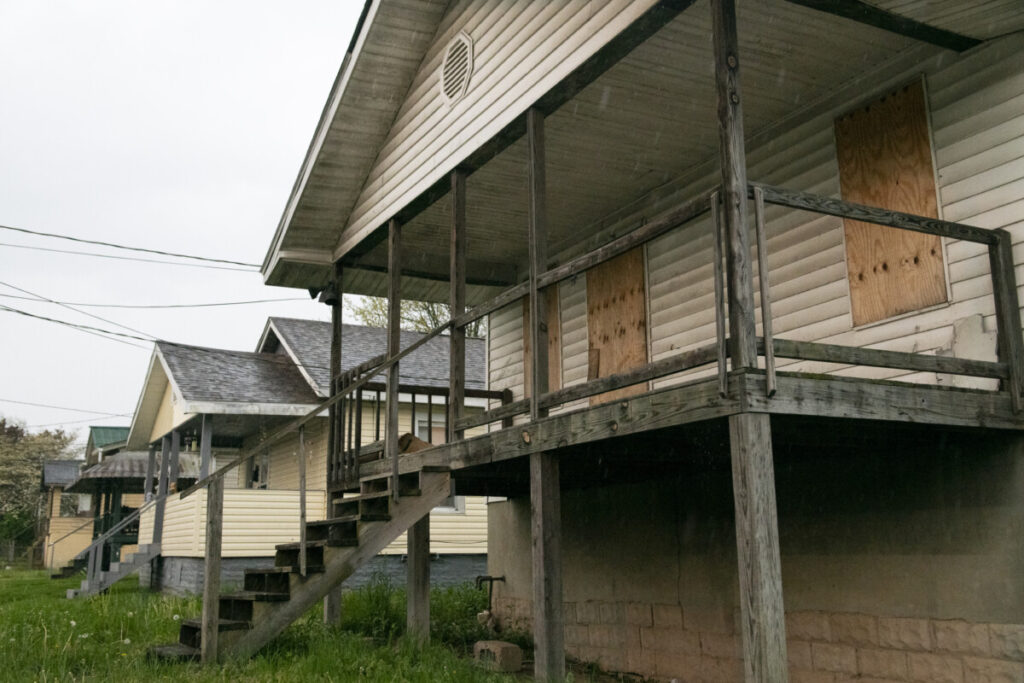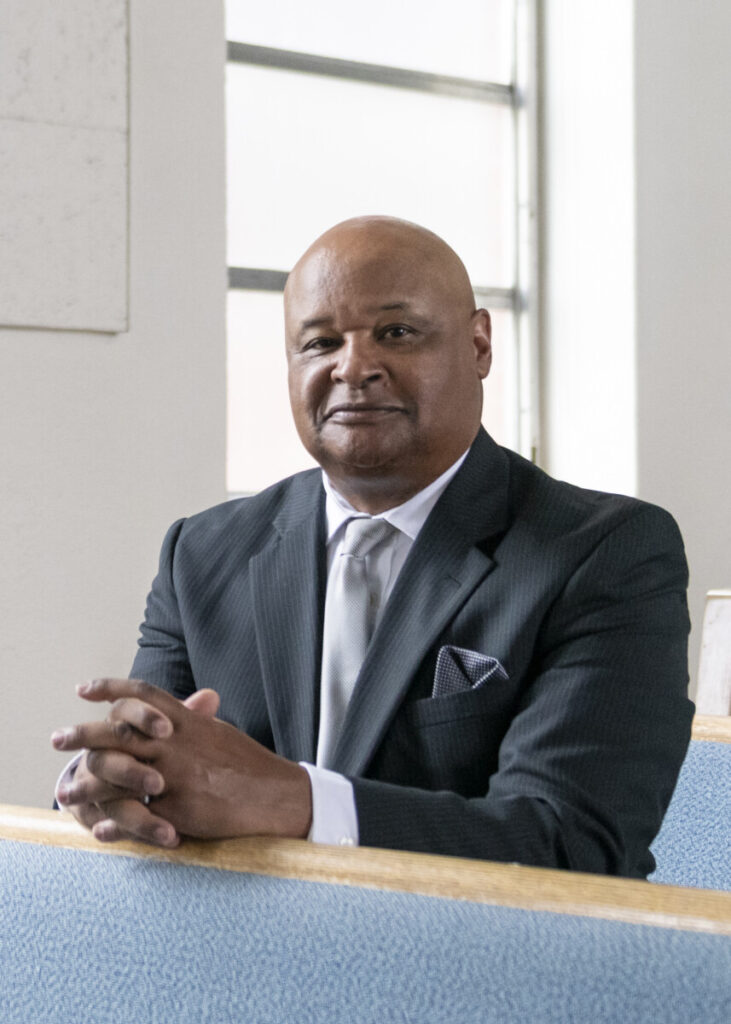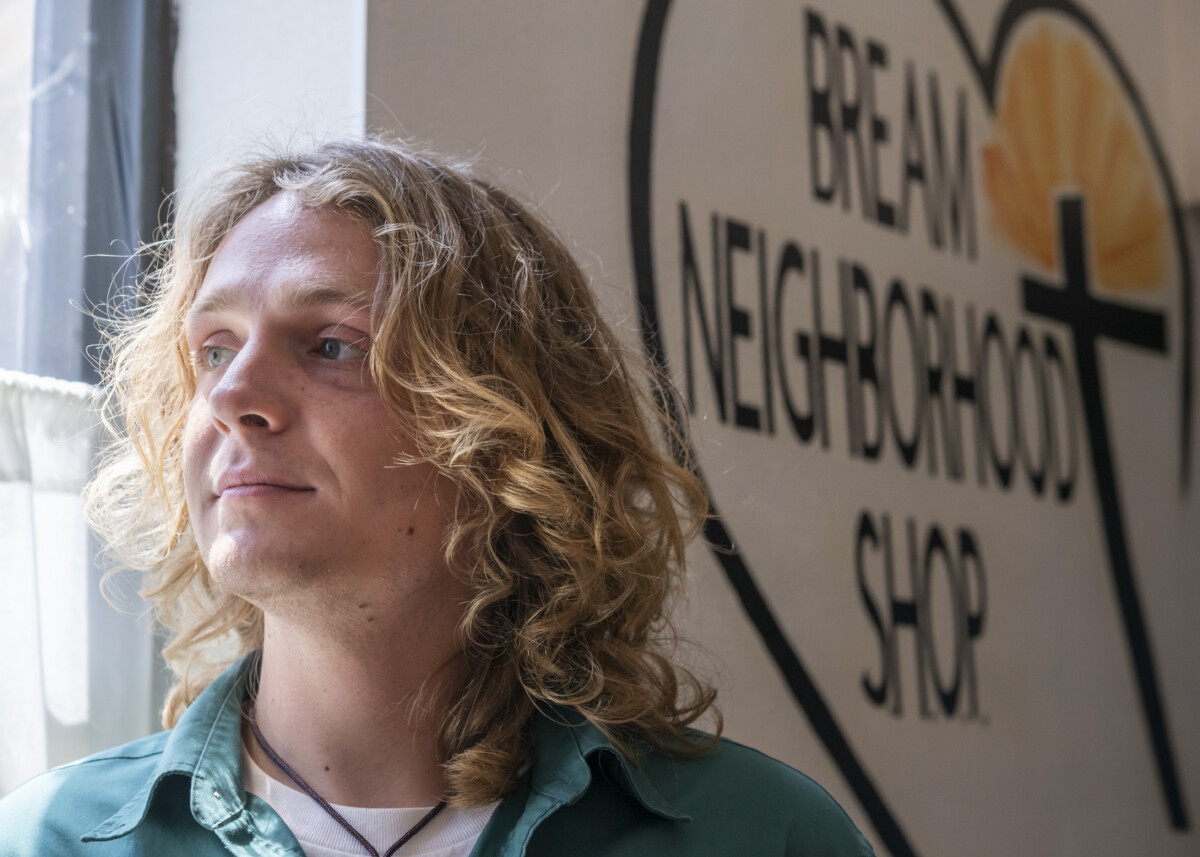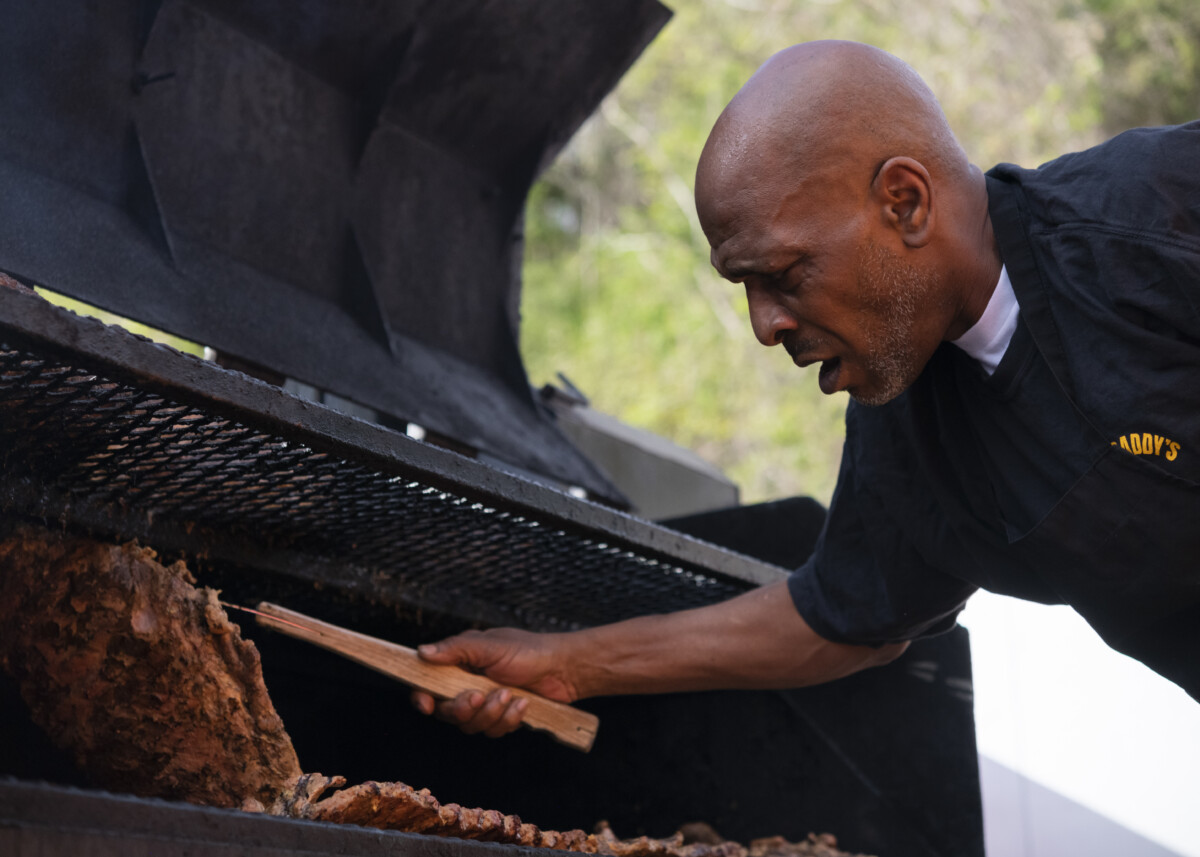Derek Hudson has lived on the West Side of Charleston, West Virginia, his entire life. He grew up on Bigley Avenue, a major road that runs parallel to the Elk River and defines the eastern boundary of the neighborhood.
After attending local public schools – first Taft Elementary, then what is now West Side Middle School, then Capital High School – he stayed around to earn undergraduate and master’s degrees from the University of Charleston.
Hudson, who is white, says the best part of the West Side is the diversity of the people who call the neighborhood home. Over a third of residents are Black and about one in five are multiracial, making the West Side the most diverse neighborhood in the state.
“You’re surrounded by people that are different from you,” says Hudson, “and so you get to learn a lot about different people’s races, ethnicities, religions. It’s great.”
But this once-thriving neighborhood, he notes, was designed to be low income. “Make no mistake about it.”
Nearly a century of systemic discriminatory practices – including redlining and the displacement of the Black community during Charleston’s urban renewal era of the 1960s and ’70s – along with the loss of employment opportunities, have left significant scars on the West Side.

Community leaders acknowledge that the underlying sources of generational poverty must be countered for the neighborhood to move forward.
Like most of Appalachia, urban and rural alike, Charleston has been forced to redefine itself economically. And like many communities, it’s grappling with longstanding issues of discrimination and neglect. It’s tackling these issues both tactically, day to day, and strategically, with long-term plans for sustainability and growth.
The West Side faces a litany of visible problems – substance use disorder, gun violence, a disproportionate rate of school suspensions – and underlying health and economic disparities. These challenges, some residents say, can be traced back to the 1840s and ’50s, when five plantations were in operation in Charleston. And like so many communities in Appalachia with similar histories and challenges, grassroots organizations – quite often faith-based – are stepping in where government agencies aren’t. On the West Side, these include Bream Memorial Presbyterian Church, for which Hudson serves as director of outreach, and the Partnership of African American Churches. Together, they’re playing critical roles in addressing the everyday consequences of decades of discrimination and neglect.

Pivot point of disruption
In the 1930s, the West Side was a bustling community, with houses packed alongside manufacturing plants, staffed by African Americans and immigrants from Russia and eastern Europe. There were also good jobs nearby in chemical plants.
“We had Union Carbide, we had DuPont, we had FMC – we had all those big chemical companies, and people had good jobs,” Karen Williams, a lifelong Charleston resident who grew up on the West Side, says.

The West Side has been home to three generations of Williams’ family – she was a student in one of the first integrated classes at Glenwood Elementary School and raised three children who have returned to live in family homes here.
Throughout the first half of the 20th century, what was known as the Triangle District was the center of Black business and culture in Charleston. The predominantly Black community sat across the Elk River from Charleston’s West Side and was anchored by buildings like the Ferguson Hotel, where musicians Ella Fitzgerald and Louis Armstrong, among others, stayed while playing gigs in town.
Churches grew along with industry and served as the foundation of the Black community. As a young girl, Williams attended church on the West Side but later moved to Simpson Memorial United Methodist Church, located in a part of the Triangle District known as “The Block.” The congregation there, she says, was “small and mighty.”
Then, in 1958, most of Charleston’s businesses desegregated. Black businesses now were in competition with white businesses across the city, and the economies of the Triangle District and the West Side entered a period of decline. By the mid-’60s, the Charleston Gazette, the state’s largest newspaper, referred to the Triangle District as “the city’s worst slum.”
Hudson cites the construction in the 1970s of the interstate system that cuts through the two neighborhoods as the pivot point of disruption. Hundreds of homes and businesses in the Triangle District were demolished, and 70 acres on the West Side were razed to make way for the interstate. Some Triangle District residents moved across the Elk River to the West Side. Very little evidence of the district remains today.
But even during the days of relative prosperity, neighborhoods in which African Americans and poor whites lived were deemed by banks to be undesirable for lending. This refusal of loans, known as redlining, effectively cut residents off from the financial system.

Then the manufacturing and chemical jobs disappeared. The former Kelly Axe and Tool company, which employed 1,000 workers on the West Side, was closed in the 1980s, replaced by a shopping center that now includes a Big Lots, an auto dealership and a UHaul moving and storage center. Jobs in manufacturing have been hard to come by, falling nationally by more than 40 percent since the mid-’90s. In the Kanawha Valley, chemical industry employment has fallen steadily since peaking in the 1950s.
The West Side of today is a very different place from the one both Williams and Hudson grew up in.
For years, Wiliams led Simpson UMC’s children’s choir. “I had 30 kids in the children’s choir. But one summer in the early 2000s, I had 15 of those kids leave because their parents had to leave West Virginia for jobs.”
“It just seems like something happened to society where people got disconnected,” she says.
Well-paying jobs have dwindled. Despair among those along the margins fuels the drug crisis. Families who lived here for generations have moved on. Those who remain speak proudly of the West Side’s heritage and mobilize to reignite it.
Acknowledging the potential

A tour of the West Side with Williams today starts with a stop at Phat Daddy’s, a takeout and outdoor restaurant tucked along the railroad tracks not far from Bigley Avenue.
Phat Daddy’s owner and chef Cameron Cordone, a New York City native, is barbecuing ribs on an outdoor grill. At the window of the tiny kitchen, a steady stream of customers place their takeout orders for pulled-pork sandwiches, fish sandwiches and ribs.
“I think the possibilities are endless on the West Side,” says Cordone, who moved to the neighborhood from Harlem 22 years ago. He appreciates the neighborhood’s diversity. “Primarily, here on the West Side, everybody’s mixed. Everybody’s almost family, white and Black.”
Cordone opened Phat Daddy’s in 2021, in the throes of the pandemic, transforming what had been a chicken coop into a successful business. He used a $10,000 grant from city government to kickstart a marketing campaign. “The city has been great,” he says.
Williams’ tour continues on the West Side Hill, starting from the manicured lawns of the Edgewood neighborhood, which includes a country club and golf course. Within two blocks comes a dramatic shift. A number of homes look as if they might crumble at any moment; some are visibly fire damaged. Windows are boarded shut.
“I mean, this is like a third-world country here,” Williams says. “It’s really, really bad, and nobody knows about this.” She wonders aloud how many legislators have ever driven through this part of the community.
Williams points out the first home she and her husband, John, bought, on the West Side Hill, in 1976, and invested in. “We built stairs inside the house to the basement,” she says. “Before the stairs, you had to walk around to the side door to get there.”
Williams still feels pride in her neighborhood, and, like Cordone, believes in its potential. She advocates for the resources to realize that potential but acknowledges the neighborhood needs more help than the community organizations and churches that are already trying to fill in the gaps can provide.

Lingering consequences
It takes more than a couple of decades to counter generations of displacement and disenfranchisement, says Joe Solomon, a member of Charleston’s city council and a longtime advocate for underserved communities in the city. “I think that’s the soil upon which we till.”
Given that disenfranchisement, he says, “My sense is that our young people there may not see a future for themselves – not as bright a future as our young people in other parts of the city.”
The West Side is “full of possibility – pain and possibilities – and you can come back and do tremendous work,” Solomon says. “It’s a policy failure that there’s so much work to do.”
The lingering consequences of systemic racism have hurt Black residents. But the Rev. Matthew Watts, pastor of Grace Bible Church on the West Side, says that intergenerational poverty affects everyone – white and Black – in the neighborhood.
And it’s long past time, Watts says, to address the systemic disparities that are the source of that poverty.
This story is part of a four part series The West Side: A Community Defining Its Future. Explore the entire series here.
Laura Harbert Allen is a Report for America corps member covering religion for 100 Days in Appalachia and Taylor Sisk is 100 Days’ health correspondent. Support their work here.



